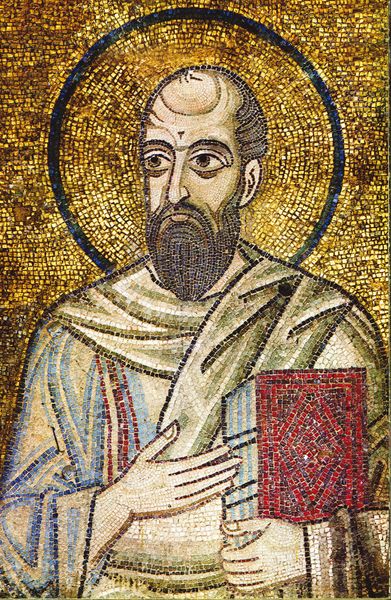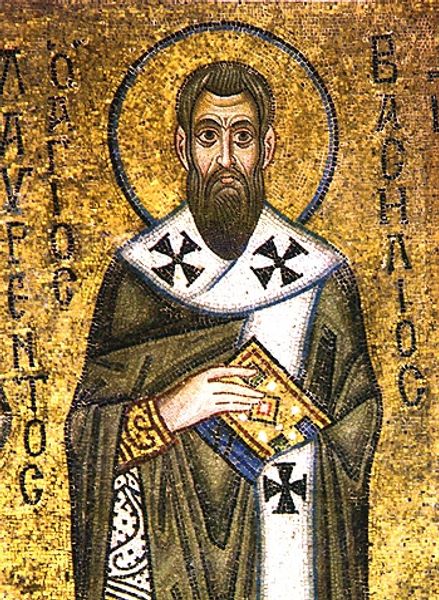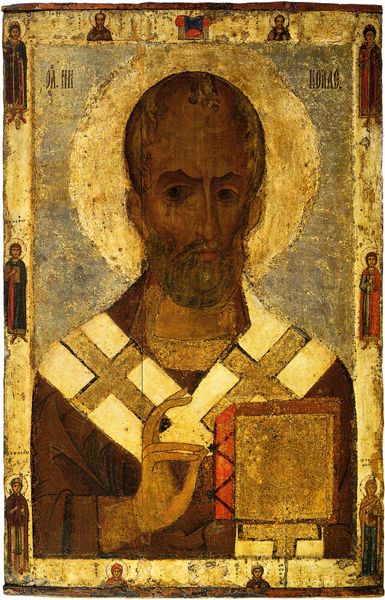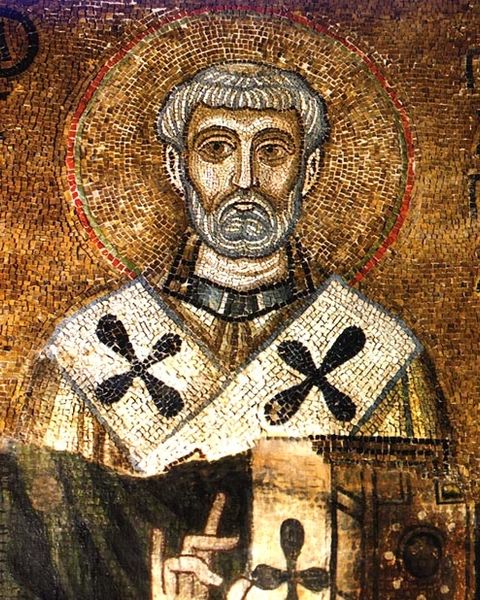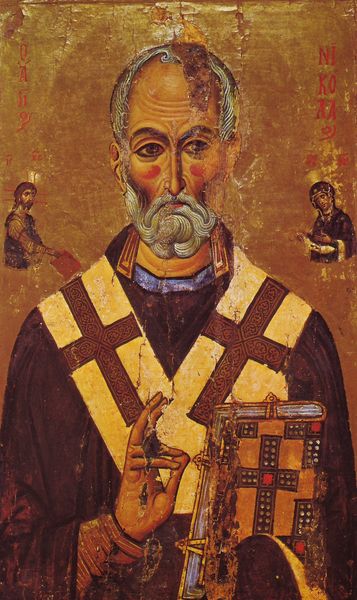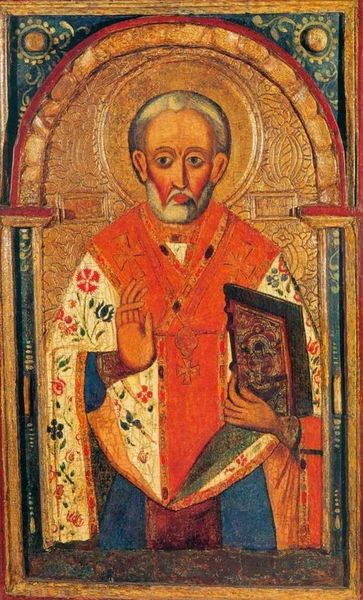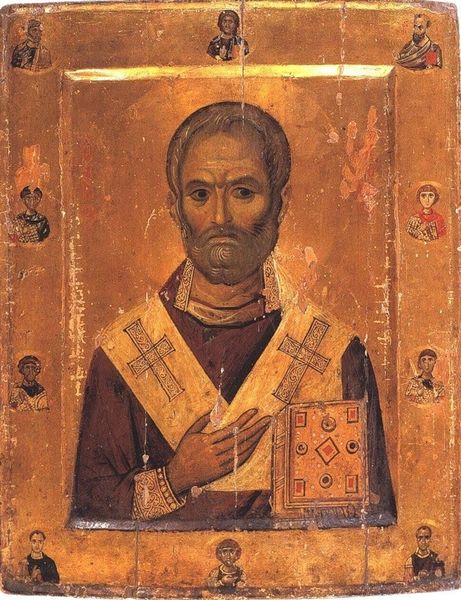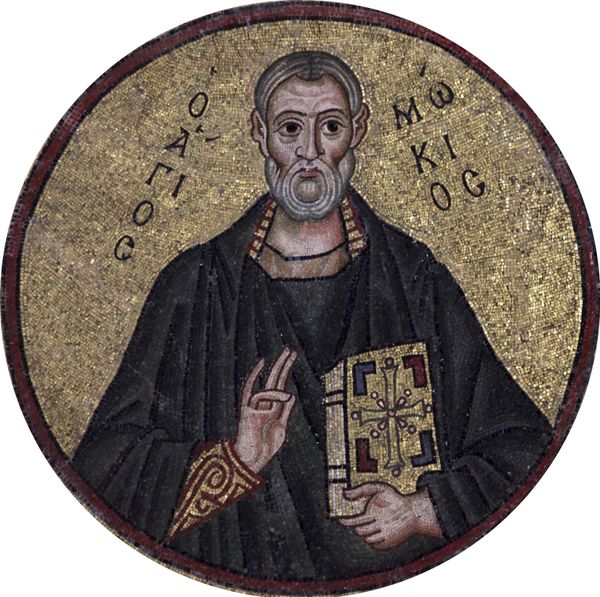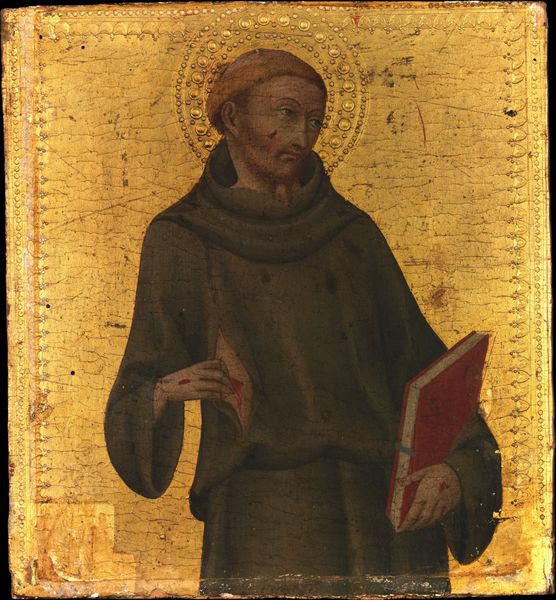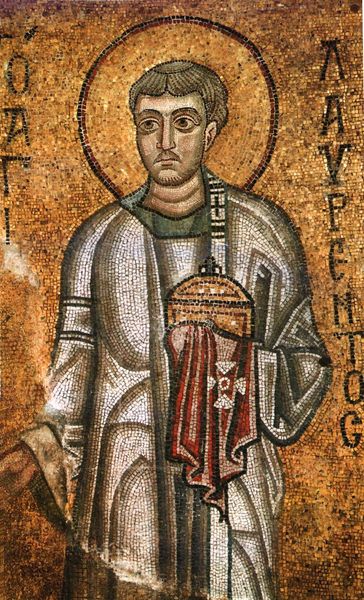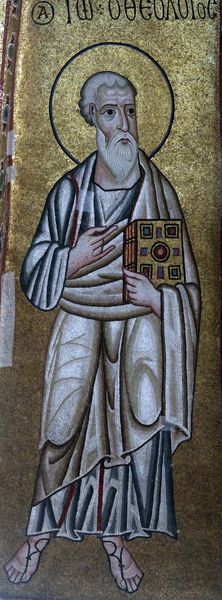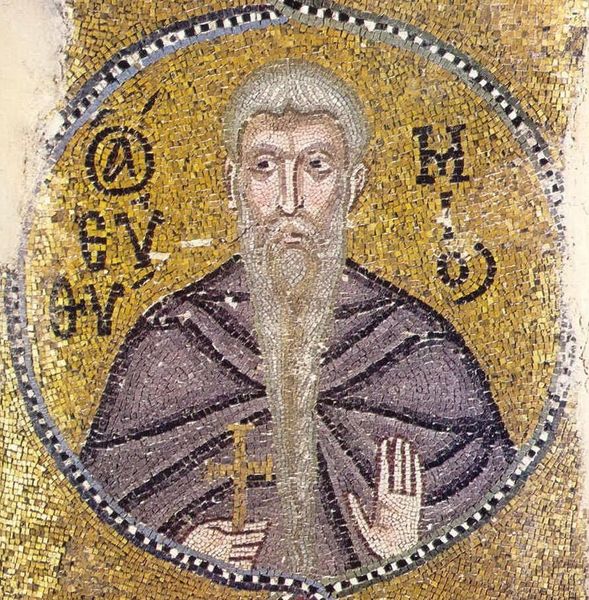
mosaic
#
portrait
#
mosaic
#
byzantine-art
#
figuration
#
tile art
Copyright: Public domain
Editor: This is a mosaic, "John Chrysostom", from 1030, found in the Saint Sophia Cathedral in Kyiv. I’m immediately struck by how intensely he’s staring out, even across all these centuries. How should we interpret this piece? Curator: Note the halo—a symbol of sanctity—and the book he holds. In Byzantine iconography, these are visual shorthands for spiritual authority and wisdom. But look closer at his eyes. What emotion do you read there? Editor: Hmm…maybe concern? Almost like he’s burdened by the weight of that wisdom? Curator: Precisely. The mosaic isn’t merely depicting John Chrysostom; it's invoking a whole theology. The crosses on his vestments? Markers of martyrdom, sacrifice, leadership. And consider the fragmented nature of the mosaic itself. It's broken up into tiny tiles. Editor: So even the materiality reinforces the idea of something whole being built from many individual parts? That feels connected to the idea of faith being built from individual believers! Curator: An excellent point! Byzantine art utilizes materials in specific ways that reinforce those religious sentiments. Notice also the slight tilt of his head and the geometry of his gaze. Do you sense the visual techniques? Editor: Yes, there is an asymmetrical effect there. His intense gaze draws my attention, like an engagement and demand for the truth from the viewer. What a lot of emotional meaning the image conveys using some powerful, almost confrontational symbolism! Curator: The enduring power of symbols, isn't it marvelous? It prompts us to think about cultural memory, not just what was, but what *remains*. Editor: Absolutely. It’s amazing to see how a work of art from so long ago can still speak so powerfully today.
Comments
No comments
Be the first to comment and join the conversation on the ultimate creative platform.
